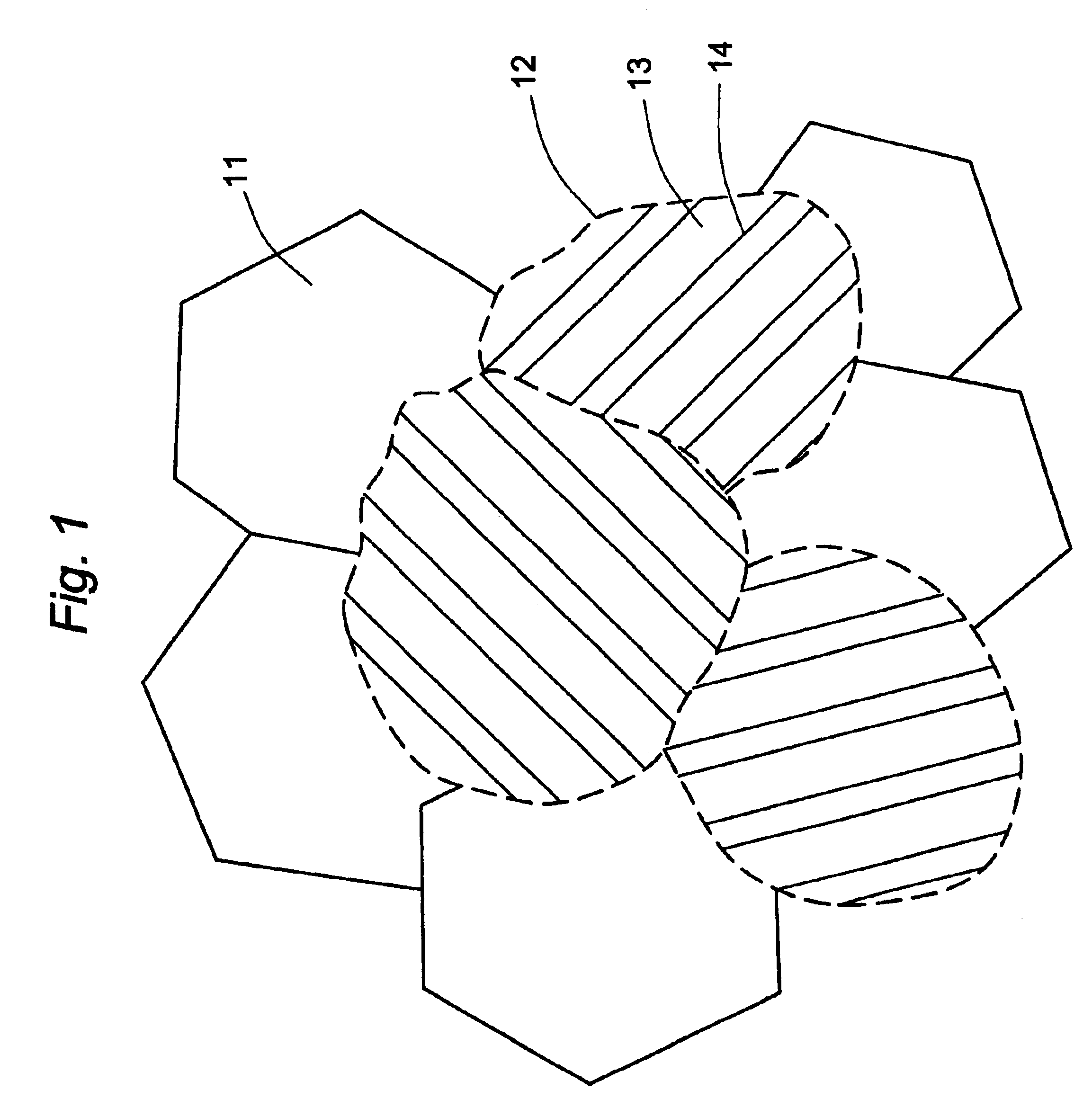Triple-phase nano-composite steels
a technology of nano-composite steels and nano-composites, which is applied in the field of steel alloys, can solve the problems of limiting toughness of carbides
- Summary
- Abstract
- Description
- Claims
- Application Information
AI Technical Summary
Problems solved by technology
Method used
Image
Examples
Embodiment Construction
The triple-phase crystal structure of this invention thus contains two types of grains--ferrite grains and martensite-austenite grains--fused together in a continuous mass in which the martensite-austenite grains contain martensite laths that have the dislocated lath structure. The individual grain size is not critical and can vary widely. For best results, the grain sizes will generally have diameters (or other appropriately characteristic linear dimension) that fall within the range of about 2 microns to about 100 microns, or preferably within the range of about 5 microns to about 30 microns. Within the martensite-austenite grains, the martensite laths are generally from about 0.01 micron to about 0.3 micron in width (adjacent laths separated by thin austenite films), and preferably from about 0.05 micron to about 0.2 micron. The amount of ferrite phase relative to the martensite-austenite phase may also vary widely and is not critical to the invention. In most cases, however, bes...
PUM
| Property | Measurement | Unit |
|---|---|---|
| temperature | aaaaa | aaaaa |
| temperature | aaaaa | aaaaa |
| dimension | aaaaa | aaaaa |
Abstract
Description
Claims
Application Information
 Login to View More
Login to View More - R&D
- Intellectual Property
- Life Sciences
- Materials
- Tech Scout
- Unparalleled Data Quality
- Higher Quality Content
- 60% Fewer Hallucinations
Browse by: Latest US Patents, China's latest patents, Technical Efficacy Thesaurus, Application Domain, Technology Topic, Popular Technical Reports.
© 2025 PatSnap. All rights reserved.Legal|Privacy policy|Modern Slavery Act Transparency Statement|Sitemap|About US| Contact US: help@patsnap.com



